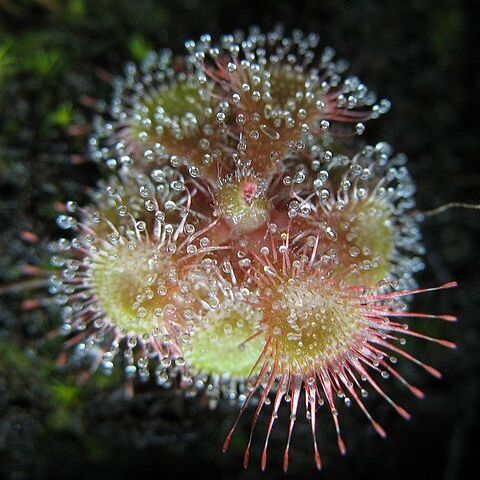Herb with fibrous roots. Stem very short. Leaves in a flat basal rosette, broadly cuneate-obovate to flabellate; lamina 8–10 mm long, 5–6 mm wide, narrowed to a very short petiole or sessile; stipules trifid, to 8 mm long, the lobes laciniate. Racemes 1–3, 6–15 cm long, sometimes glandular in upper half, 3–10-flowered; bracts usually 3-partite, 1–3 mm long; pedicels 3–4 mm long, erect. Calyx 2.5–3 mm long, divided almost to base into narrowly oblong, obtuse lobes, striate, tuberculate. Petals obovate, 4 mm long, white or pink. Styles 5, filiform, 2.5 mm long, shortly penicillate at apices. Seeds very small, minutely pitted, black.
Rosulate. Leaves red or green, appressed to the soil, obovate to orbicular; blade 6-10 by 4-6 mm. Stipules mostly 3-parted, each segment with lanceolate acute lobes. Peduncles 1-3, erect, 4-27 cm, rhachis 1-9.5 cm, 2-25-flowered. Pedicels erect, 1.5-4 mm. Sepals oblong, blunt, 2.5-3 mm long. Petals white, obovate, ca 4 mm long. Styles 5, at their apex split into very short lobes. Capsule ca 1.5 mm long. Seeds dark, very fine-scrobiculate.


